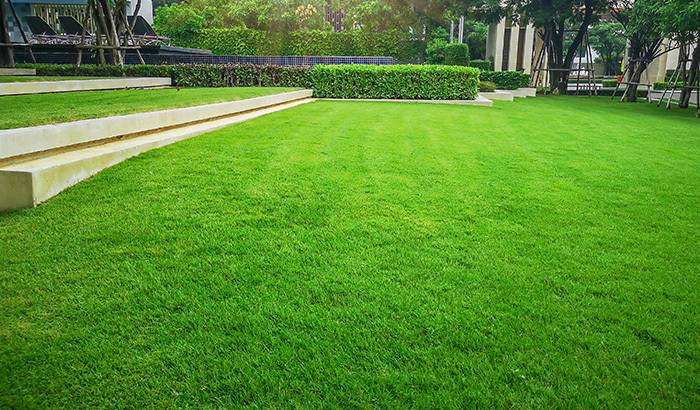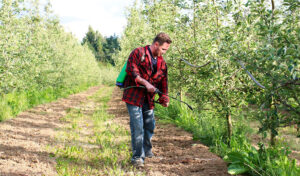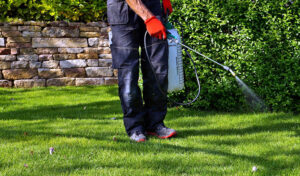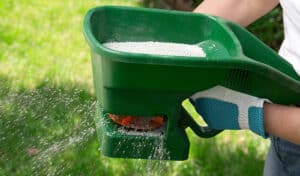The grass might seem “greener on the other side”, but lawn turf offers a simple solution to ensure your grass looks pristine all year long.
With so many types of natural grass and turf on the market, it can be difficult to decipher their similarities and differences.
If you’re ready to transform your outdoor area with lawn turf, stay tuned as we cover everything you need to know about the various types.
What Is Lawn Turf?
Lawn turf (or turf grass) is seen almost everywhere you look in common areas such as lawns, golf courses, sports fields, and playgrounds. It has the strength to be mowed regularly and stepped on repeatedly. But it has also been bred to be soft, smooth, and even. Here are a few of the major reasons everyone loves lawn turf.
- Lawn turf is thicker and stronger than native grasses.
- It does not require much maintenance to keep it fresh and nice.
- Lawn turf grows densely to carpet the ground.
- Lawn turf looks great in any outdoor living space and can survive even the harshest winters to come back year after year.
- It prevents most weeds from taking hold in your lawn.
Lawn turf is a suitable choice when setting up an area for even heavy foot traffic and for many purposes. But there are different options. When choosing turf grass, you must first understand which type is best suited for your climate, consider which activities will occur on the grass, and the amount of foot traffic it will need to withstand.
Let’s dive into some common types of lawn turf to see which would fit your unique needs.
Bermuda Grass
Bermuda grass is ideal for warm and temperate climates. This luscious grass originated from Africa and was introduced to North America from Bermuda; hence, its name!
Bermuda grass is resistant to the sun’s heat and highly resilient to droughts. This grass has an extensive root system that can grow deep enough to find the water below.
Bermuda grass’ kryptonite is shade. If the area you’re planting sees plenty of sunlight, Bermuda grass will fit the bill! If you’re looking for grass for your lawn, a golf course, tennis courts, or personal landscaping, Bermuda grass is an excellent choice. But it probably isn’t the best for areas where trees or buildings block the sun for significant parts of the day.
Perennial Ryegrass
If you’re looking for grass with opposing characteristics to Bermuda, perennial ryegrass is ideal. This turf option thrives best in cool climates but cannot handle extreme temperatures well.
Perennial ryegrass germinates very quickly, so it’s an excellent choice if you’re in a landscaping bind. Most perennial ryegrass can grow from seed to a mow-ready length in just three short weeks.
Perennial ryegrass is also incredibly low-maintenance. It is bred for great resistance to insects and disease, so it requires no pesticides or fungicides. When it grows, it displays a beautiful, green hue that is attractive for sporting events. For example, the Wimbledon Tennis Club and the Augusta National Golf Club use perennial ryegrass as their main type of turf.
Perennial ryegrass is also ideal for pastures. Many farmers prefer it because of its low maintenance properties and the short germination time. As you prepare the seed, keep in mind you need to spread it evenly to prevent it from growing in clumps. Otherwise, this lush grass will be an excellent addition to any pasture, sporting event, or residential yard.
Kentucky Bluegrass
Kentucky bluegrass is most popular across the United States. The biggest reason for its popularity is that it’s very tough and can withstand plenty of walking. This bluegrass grows best in the spring and fall seasons, so it’s ideal for temperate locations. Kentucky bluegrass can grow in the summer but struggles in extreme temperatures.
This grass also has an extensive root system that makes it easy to grow a thick mat of luscious grass. Not only is it thick, but it has a smooth texture and a beautiful dark green color to boot.
Kentucky bluegrass also holds up well against droughts; however, if it has difficulty finding water, it can go dormant. Luckily, once water is reintroduced, it can quickly revive itself into the lush green lawn from once before.
Buffalo Grass
Buffalo grass is native to North America. It grows from Montana all the way down through Mexico. This is a resilient type of grass that can withstand extreme hot and cold temperatures. Its typical growth time is between May to September. Once summer ends and starts transitioning to fall, buffalo grass will go brown and stay this way through the winter. Once spring rolls around, it is ready and eager to start growing again.
Similar to Kentucky bluegrass, buffalo grass also holds up well against a drought. Buffalo grass is also easy to maintain and only needs to be watered and mowed occasionally.
Buffalo grass can be planted using sod, seeds, or plugs. As a native and wild plant, buffalo grass is the best option for feeding farm animals native to North America.
Creeping Red Fescue Grass
Creeping red fescue grass is native to Europe and is ideal for cooler climates. This grass provides great coverage of thick, green grass that’s quite easy to maintain. It doesn’t need to be watered or fertilized frequently for it to thrive.
Creeping red fescue grass is known for its thin and narrow blades that provide a luscious green color. It doesn’t take too much time for it to grow, but unlike Bermuda grass, it’s not aggressive in nature. This grass can stay green all year long in the right climate.
During the warm summer months, this grass turns a pale green color and becomes dormant. Additionally, if the temperature gets too high, the grass can brown. This grass is perfect for golf courses, but not many other places with high foot traffic.
Get Fast and Affordable Lawn Care With Summit Lawn and Pest Control
If you’re ready to transform your yard, sporting complex, or another outdoor oasis with lawn turf, let Summit Lawn & Pest Control help! We have a passion for providing fast and affordable home lawn care and pest control services so you can focus on enjoying your yard instead of pulling weeds or laying sod.Call us today to schedule your free assessment and find out what we can do for your lawn! We serve Utah County, Utah, including Lehi, Eagle Mountain, Provo, and Spanish Fork.







